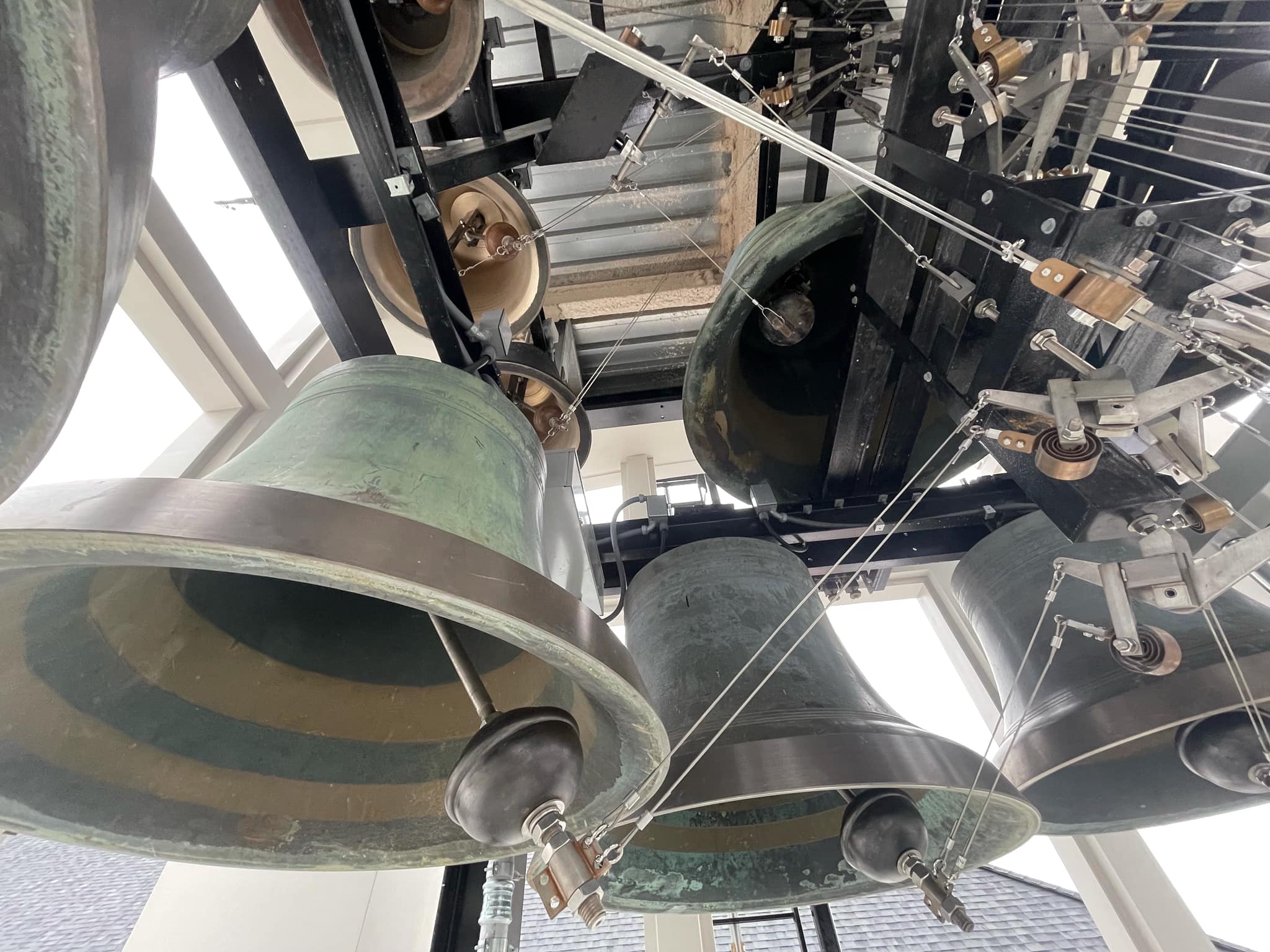Chimes & Carillons
A Chime is a set of chromatically tuned bells (in any number between 8 to 22) that are used to play very simple pieces of music. Chimes were once a common tower instrument made by the now extinct firms such as Meneely, Buckeye, Vanduzen and Stuckstede. Although there are numerous chimes that still exist in our towers, these companies’ tuning abilities left much to be desired for modern listeners. Bells installed in these chimes were often not tuned and as a result, balancing the five partial tones was outside of their capability. These chimes often sound erratic and sometimes very discordant with the abbreviated pieces of music that are played on them.
Through custom tuning, we are able to establish a personal temperament for old chimes by removing them from the tower and bringing them back to our foundry for work. This is also the time when chimes may be enlarged to a carillon if additional bells may be desired.
A Carillon is a set of at least two octaves of tuned bells installed in a tower that are used to play music. A carillon that is comprised of at least 47-49 bells is the standard of the World Carillon Federation as most of the music that is composed for study can be played on this four-octave instrument. Grand Carillons are carillons that are composed of any number of bells above four octaves and are certainly a very special and impressive instrument. All bells in a carillon and chime are installed in a ‘dead hung’ manner, meaning that they do not swing and are secured into the frame by head bolts. Sometimes though, bells in the lower register are fitted to swing so that they may peal at certain times of the day or to mark certain auspicious occasions.
These bells are played manually from a keyboard called a clavier that is usually below or adjacent to bells installed in the frame. The clavier is set up much like any other keyboard instrument, but the ‘keys’ in this case are made with batons or levers commonly of wood that are depressed by the player with hands in loosely closed fists.
These batons are connected to the clappers installed in the interior of the bells by means of a linkage system with either roller bars or directed cranks. This part of the instrument transmits the travel of the baton from the player’s hand through to the clapper and thusly against the bell. This transmission system in and of itself is a very elegant and well thought out aspect of the instrument, and being next to the overall layout and tuning of the bells, is perhaps the most crucial factor in providing both players and listeners alike with the most from their instrument.
Despite this rather simplified explanation of this method of playing, carillonneurs the world over study diligently to master their craft and playing carillon music is still a rather misunderstood aspect of classical study. If you happen to meet a carillonneur or know of a carillon in your area, do reach out to them and give them your appreciation and support for their craft.
Areas in carillon design have only grown in the last 40 years and we exist on the forefront of contemporary innovations for better transmission systems and a further understanding into treble design for temperament and overall musicality.
In addition to regular carillons, we also produce practice claviers and can restore or maintain current practice claviers. All of our practice carillons are installed standard with cast hemispherical bells instead of sound bars and resonators. We believe in providing an experience that matches the ‘cast bronze’ spirit of a tower carillon and believe that providing a sound that is matched to bronze bells with at least two partials (as is found in hemispherical bells) to all of our practice instruments. We do not believe that a carillon, by any stretch of the imagination, should sound like a xylophone, glockenspiel, or marimba. In addition to this, practice carillons can be digitally synthesized in order to project bells sounds back to the player if so desired.
Learning to play the carillon can often be a difficult path as every error or missed note on a tower carillon carries through to a very public audience. These practice carillons allow for learners of the art to perfect their playing technique as their personal style and method continues to grow. All carillons as well as chimes may be automated by installing electro-magnetic strikers to a controller and clock system that plays the bells automatically. These systems may also be installed to compliment manual systems of playing carillons and chimes as well.
The difference our start to finish knowledge and experience makes can be heard in every ring.


